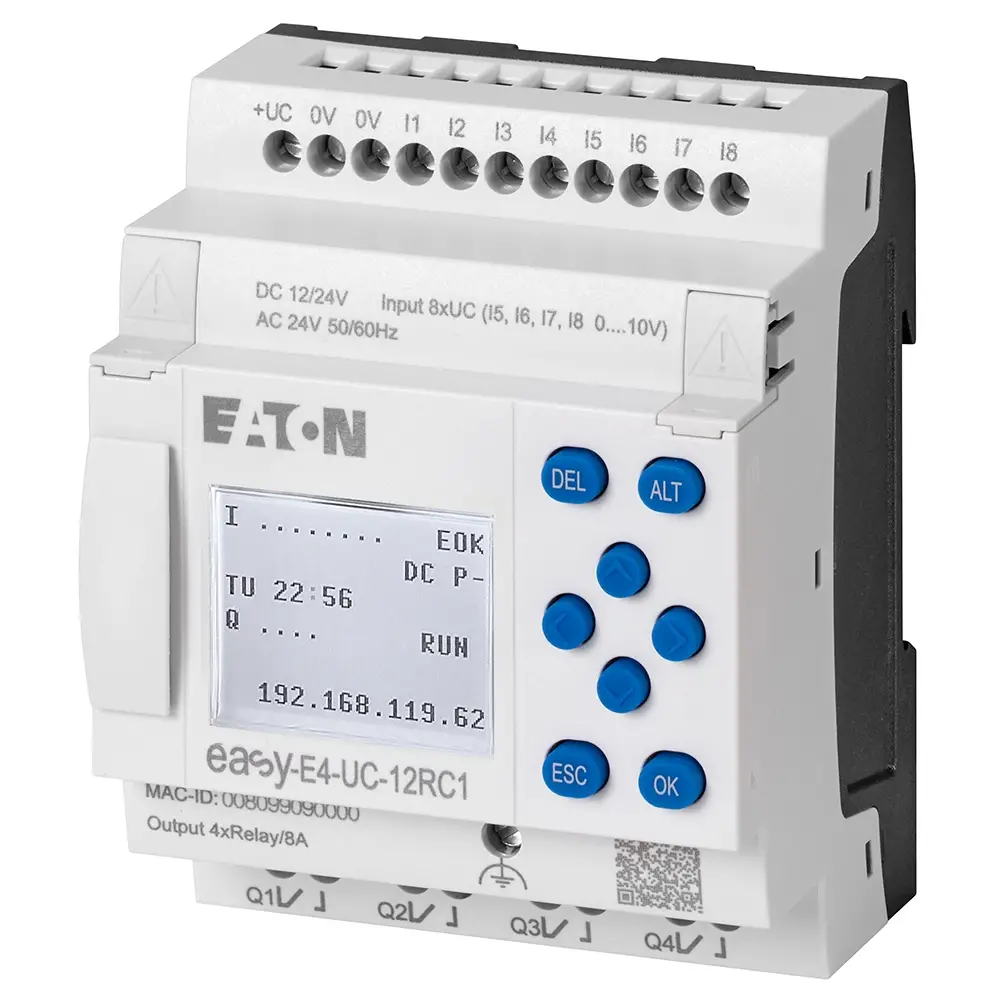This article provides an overview of programmable relays, detailing their advantages over traditional relays, as well as their applications in industrial and home automation. It explains the evolution from basic relay control to more advanced programmable relays and their role in improving efficiency and reliability in automated systems.
What Are Programmable Relays?
Relays and contactors were the origins of automatic control. The basic relay provided adequate control for automatic control and industrial processing for many years. But as industry demand, the need for improvement, and greater automation grew, the control limits of the relay became apparent.
Mass-production industries and original equipment manufacturers (OEMs) required improvements that the relay could not provide in terms of high speeds, reliability of service, and minimum maintenance.
The programmable relay was originally introduced as a relay replacer, bringing multiple timers, relays, and counters into one unit. They did little more than manage the on/off sequencing of motors and solenoids, providing basic functions that could previously only be implemented with individually installed and wired devices.
The rise of home automation is in part due to a programmable relay’s ability to control the domestic environment.

Figure 1. Programmable Relay Diagram
Programmable Relays Basic Applications
Dedicated controllers with more features than basic relays and timers evolved through automation needs, innovation, the rise of cheap electronics, and technological developments. Many industrial automated applications still rely on dedicated controllers for specific temperature, timing, or counting control tasks.
Solid-state circuitry was introduced initially because of its ability to operate as an on/off device and to repeat the operation millions of times—more than a relay could and with minimal maintenance. The control function being in either an ‘On’ or an ‘Off’ state depended on an input signal from common control devices.
Sensors and switches provide input signals to the solid-state device or dedicated controller, and this, in turn, operates the required device or an actuator. For example, a thermostat can be manufactured to close its contacts at a specific temperature. Closure of the contacts acts on an electronic component, which can then start an air-conditioning system. The thermostat contacts open when the temperature drops and the air-conditioner stops. The system has only two states—on or off.
In this example, the thermostat replaced the start pushbutton of the relay circuit and a solid-state device such as a TRIAC replaced the contacts of the relay (TRIACs are control devices for switching circuits). For industrial process control, this on/off method does not provide the accuracy needed for many products. Devices such as the thermostat mentioned above cannot operate at the one temperature for both on and off states. This introduces a differential—if the contacts open at 22°C, it is extremely unlikely that they will also close at this temperature. Depending on the circuit, the closing temperature might be 18°C, giving a differential of 4°C. A more advanced programmable relay or programmable logic controller (PLC) is required to meet the on-off and differential temperature control conditions required.
Programmable Relays Advanced Applications
The programmable relay is a relay that can have multiple sensors (such as photovoltaic, temperature, and flow-level sensors) or control inputs (such as start-stop pushbuttons and timers) and be able to perform decisions based on the logic that has been programmed into it via its on-board software and human-machine interface (HMI).
Programmable relays are more suited to small, stand-alone, low-complexity applications. Many varieties also provide an LCD and operating buttons to allow setting and monitoring of inputs, outputs, and ladder programming. Many industrial automated applications still rely on dedicated controllers for specific temperature, timing, or counting control tasks. Table 1 lists a number of programmable relay applications for building automation systems and control in the commercial and building sectors.

Figure 2. Programmable Relay Block Diagram
‘Programmable relay’ is a broad term that now encompasses electronic control devices that range from dedicated controllers to those with full programmable logic controller (PLC) functionality. Some brands of programmable relays are promoted in the market as mini and micro-PLCs; modern PLCs can be regarded as little computers made up of solid-state circuitry.
| OEM building automation applications | |
| Door/gate control | Entertainment/theatre controls |
| Security controls | Compressor control |
| Automated window blind control | Conveyor control |
| Roller shutter control | Pump control |
| Access control | Awning control |
| Weather condition controls | Air quality monitoring |
Lighting control and automation
|
Heating, ventilation and air-conditioning (HVAC)
|
|
Table 1. Programmable relays for building automation systems and control |
|
Advantages of programmable relays over relay controls
- Separate control devices are no longer needed. The built-in features on a single programmable relay can take the place of many control devices (timers, relays, and counters), combining sensing, 2-wire, and start-stop controls.
- Reliable circuit control is provided electronically with no moving contacts, reducing wear and tear and the frequency of relay repair or replacement.
- Industrial process functions and applications become more efficient and easier to manage and troubleshoot.
- Installation of a programmable relay control system reduces labor costs and time required for wiring, system commissioning, and installation testing.
- The integrated display shows alarms and input-output status for better troubleshooting. This often eliminates or minimizes the need for a technician to use a multimeter or logic probe for troubleshooting and fault finding.
Programmable Relays Key Takeaways
Programmable relays represent a significant advancement in automation technology, providing enhanced control, reliability, and efficiency for industrial and home applications. Their ability to replace multiple traditional relays and timers with a single unit simplifies circuit design and reduces maintenance, while their programmable nature allows for more complex and precise control functions. This versatility makes programmable relays essential for optimizing automated processes, ensuring consistent performance, and reducing operational costs in various settings.